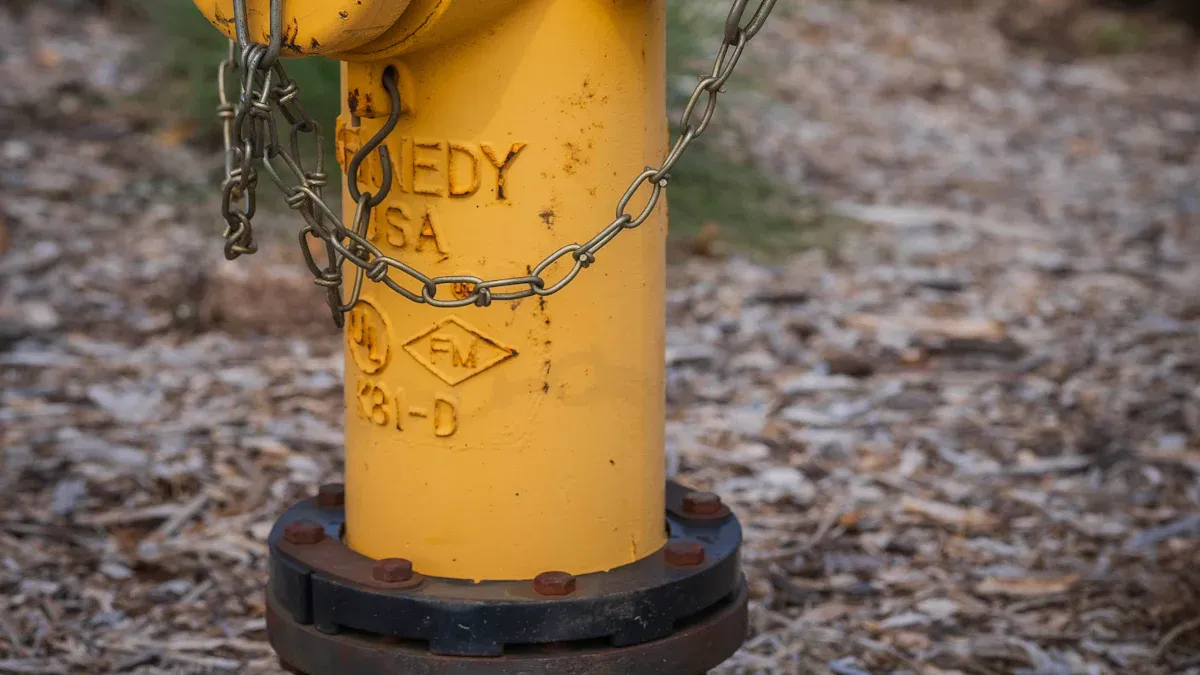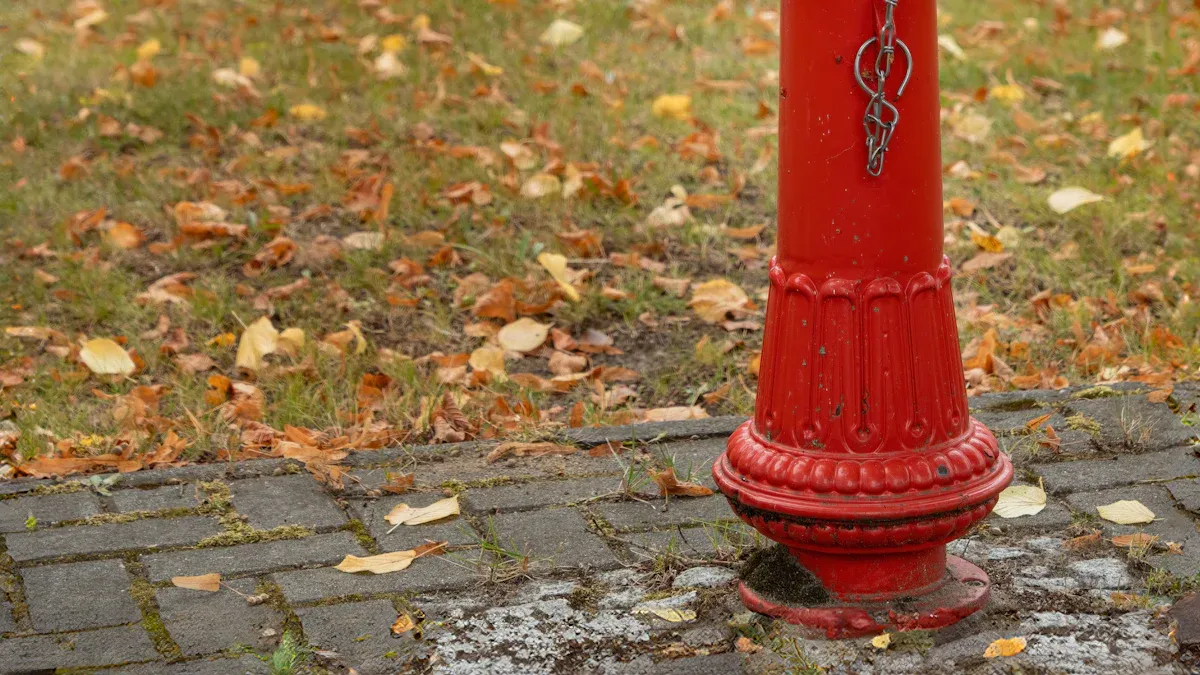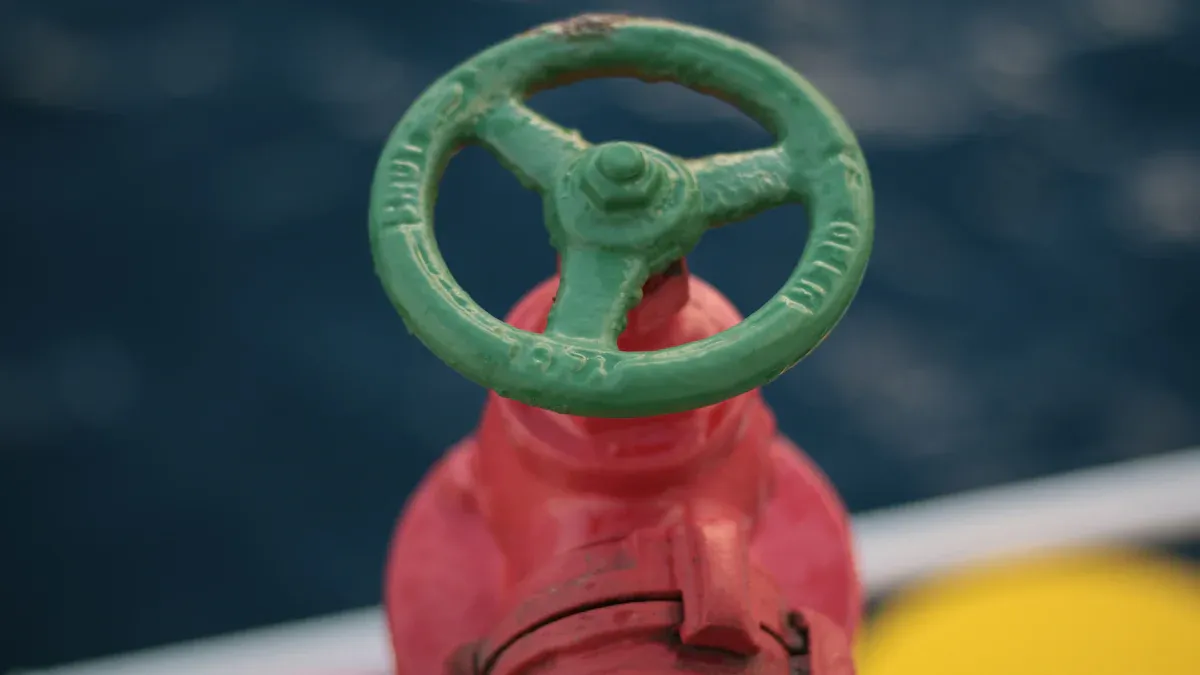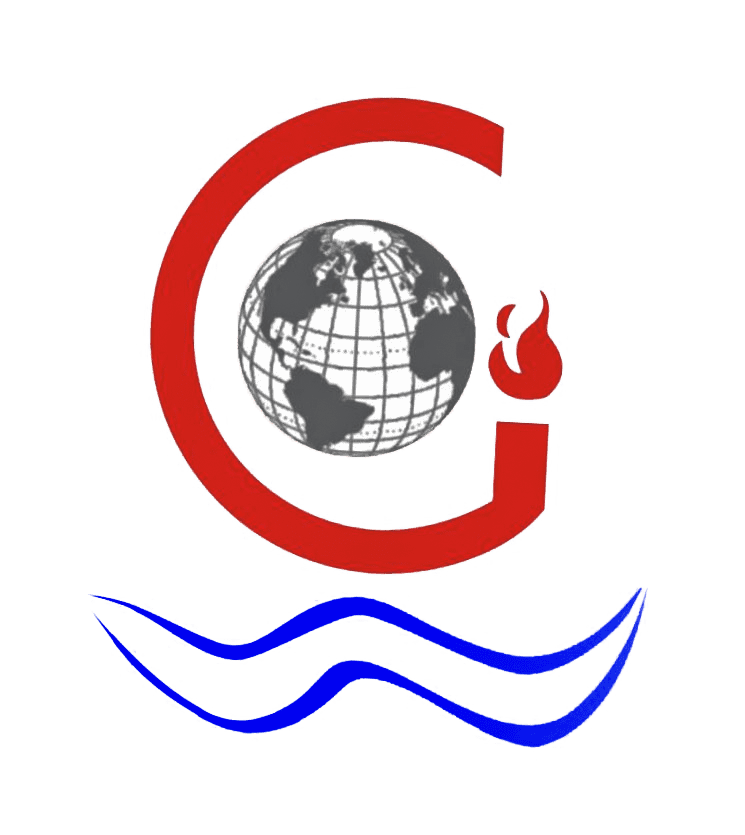
Choosing the right fire hydrant valve suppliers is critical for the success of your OEM projects. Reliable suppliers ensure consistent product quality, compliance with safety standards, and timely delivery. Unreliable ones, however, can lead to costly delays, subpar materials, and project overruns. These risks can jeopardize your reputation and increase operational expenses.
To avoid these pitfalls, you must evaluate suppliers based on key factors like certifications, material quality, and manufacturing capabilities. This approach helps you identify partners who align with your project needs and long-term goals.
Key Takeaways
- Pick suppliers with certifications like UL, FM, or ISO. These show the valves are safe and good quality.
- Look at the valve materials. Strong materials stop leaks and make systems last longer.
- Review the supplier’s history and customer reviews. Good reviews mean they are trustworthy and care about quality.
- Ask for product samples to check quality and fit. Testing helps avoid problems in the future.
- Communicate clearly with suppliers. Sharing updates and being honest builds trust and avoids confusion.
Understanding Reliability in Fire Hydrant Valve Suppliers
Consistent Quality and Compliance
Reliable fire hydrant valve suppliers consistently deliver products that meet industry standards and safety regulations. You need valves that comply with certifications like UL, FM, or ISO to ensure they perform effectively during emergencies. Non-compliant valves can lead to safety hazards and legal liabilities. Consistency in quality also minimizes the risk of defects, reducing maintenance costs and ensuring long-term reliability.
Suppliers with robust quality control processes are essential. Look for those who conduct regular inspections and testing throughout the manufacturing process. This ensures every valve meets your specifications. By prioritizing quality and compliance, you protect your OEM projects from potential failures and maintain your reputation in the market.
Impact on OEM Project Timelines and Budgets
Delays in receiving components can disrupt your project timelines. Unreliable suppliers often fail to deliver on time, causing costly setbacks. You need fire hydrant valve suppliers who can adhere to agreed schedules and provide accurate delivery estimates. Timely delivery ensures your production line operates smoothly without interruptions.
Budget overruns are another risk. Poor-quality valves may require replacements or repairs, increasing expenses. Reliable suppliers help you avoid these issues by providing durable products that meet your requirements. Partnering with dependable suppliers keeps your projects on track and within budget.
Importance of Industry Experience and Reputation
Experienced suppliers understand the unique challenges of OEM projects. They bring valuable insights into product design, material selection, and system compatibility. You should prioritize suppliers with a proven track record in the fire safety industry.
Reputation matters. Positive client feedback and case studies indicate reliability and trustworthiness. Researching a supplier’s history helps you gauge their ability to meet your expectations. Choosing experienced and reputable fire hydrant valve suppliers ensures you receive high-quality products and professional support.
Key Factors to Evaluate Fire Hydrant Valve Suppliers

Certifications and Safety Standards
Certifications are critical when evaluating fire hydrant valve suppliers. You should confirm that the supplier complies with recognized safety standards such as UL, FM, or ISO. These certifications demonstrate that the valves meet stringent performance and safety requirements. Non-certified products may fail during emergencies, putting lives and property at risk.
Ask suppliers for documentation of their certifications. Verify their compliance with local and international fire safety regulations. This step ensures that the valves you procure align with legal and industry standards. Reliable suppliers prioritize safety and invest in maintaining up-to-date certifications.
Material Quality and Construction
The materials used in fire hydrant valves directly impact their durability and performance. High-quality materials, such as corrosion-resistant metals, ensure the valves withstand harsh environments and prolonged use. Poor material choices can lead to premature wear, leaks, or failures.
Evaluate the supplier’s material sourcing practices. You should also inquire about their construction techniques. Suppliers who use advanced manufacturing processes often produce valves with superior strength and reliability. By focusing on material quality, you reduce maintenance costs and enhance the lifespan of your systems.
Manufacturing Capabilities and Customization Options
Manufacturing capabilities play a significant role in meeting your project’s specific needs. Suppliers with modern facilities and advanced machinery can produce valves with consistent precision. This ensures compatibility with your existing systems and reduces installation challenges.
Customization options are equally important. Your OEM projects may require unique valve designs or specifications. Partnering with suppliers who offer tailored solutions allows you to address these requirements effectively. Discuss their ability to handle custom orders and ensure they can scale production as needed.
Tip: Choose suppliers who demonstrate flexibility and innovation in their manufacturing processes. This ensures they can adapt to your evolving project demands.
Compatibility with Existing Systems
Ensuring compatibility with your existing systems is a critical factor when selecting fire hydrant valve suppliers. Valves that integrate seamlessly with your current infrastructure reduce installation challenges and operational disruptions. You should evaluate whether the supplier’s products align with your system’s specifications, including size, pressure ratings, and connection types.
Suppliers who offer detailed technical documentation make this process easier. These documents provide essential information about the valve’s design, performance, and compatibility. Additionally, you should inquire about the supplier’s ability to provide technical support during installation. This ensures that any unforeseen issues can be resolved quickly.
Tip: Request compatibility testing or simulations from the supplier. This step helps you confirm that the valves will function effectively within your system before committing to a large order.
Choosing a supplier who prioritizes compatibility saves you time and resources. It also minimizes the risk of operational failures, ensuring your OEM projects run smoothly.
Track Record and Client Feedback
A supplier’s track record offers valuable insights into their reliability and performance. You should research their history of delivering high-quality products and meeting deadlines. Suppliers with a proven track record in the fire safety industry are more likely to meet your expectations.
Client feedback is another essential evaluation tool. Positive reviews and testimonials indicate a supplier’s commitment to quality and customer satisfaction. You can also request references or case studies to gain a deeper understanding of their capabilities. Speaking directly with past clients provides firsthand insights into the supplier’s strengths and weaknesses.
Note: Look for suppliers who have experience working on projects similar to yours. This ensures they understand your specific requirements and can deliver tailored solutions.
By focusing on a supplier’s track record and client feedback, you reduce the risk of partnering with an unreliable provider. This step helps you build confidence in your decision and ensures long-term success for your OEM projects.
Steps to Vet Potential Fire Hydrant Valve Suppliers
Conducting Background Research
Start by gathering detailed information about potential suppliers. Research their history, certifications, and industry experience. A supplier’s website often provides valuable insights into their product range, manufacturing capabilities, and compliance with safety standards.
Use online reviews and industry forums to assess their reputation. Look for consistent feedback regarding product quality, delivery reliability, and customer service. Negative reviews or unresolved complaints can indicate potential risks.
Tip: Check if the supplier has experience working with OEM projects similar to yours. This ensures they understand your specific requirements and challenges.
Requesting and Testing Product Samples
Requesting product samples is a critical step in evaluating fire hydrant valve suppliers. Samples allow you to assess the quality, durability, and compliance of their valves. Test the samples under conditions that mimic real-world scenarios, such as high pressure or extreme temperatures.
Pay attention to the materials used and the valve’s construction. High-quality samples indicate the supplier’s commitment to excellence. If the samples fail to meet your standards, it’s a red flag.
Note: Testing samples also helps you verify compatibility with your existing systems. This reduces the risk of operational issues later.
Visiting Manufacturing Facilities
A visit to the supplier’s manufacturing facility provides firsthand insights into their operations. Observe their production processes, quality control measures, and equipment. Modern facilities with advanced machinery often produce more reliable products.
During the visit, ask about their capacity to handle large orders or custom designs. Discuss their lead times and how they manage supply chain disruptions. A transparent and well-organized facility reflects the supplier’s professionalism and reliability.
Tip: Use this opportunity to build rapport with the supplier. Strong relationships can lead to better communication and long-term collaboration.
Reviewing References and Case Studies
Reviewing references and case studies is a crucial step in evaluating fire hydrant valve suppliers. These resources provide real-world insights into a supplier’s performance, reliability, and ability to meet project requirements. By analyzing them, you can make informed decisions and reduce the risk of partnering with an unsuitable supplier.
Start by requesting references from the supplier. Ask for contact details of past clients who have worked on projects similar to yours. Speaking directly with these clients allows you to gather firsthand information about the supplier’s strengths and weaknesses. Focus on key aspects such as product quality, delivery timelines, and responsiveness to issues.
Tip: Prepare a list of specific questions to ask references. For example, “Did the supplier meet your deadlines?” or “Were there any unexpected challenges during the project?”
Case studies offer another valuable perspective. These detailed reports showcase the supplier’s experience and ability to handle complex projects. Look for case studies that highlight projects in your industry or with similar specifications. Pay attention to how the supplier addressed challenges, customized solutions, and delivered results.
When reviewing case studies, evaluate the following:
- Project Scope: Does it align with your requirements?
- Challenges and Solutions: How did the supplier overcome obstacles?
- Outcomes: Were the client’s goals achieved?
Note: A supplier with well-documented case studies demonstrates professionalism and transparency.
By thoroughly reviewing references and case studies, you gain a clearer picture of the supplier’s capabilities. This step helps you identify reliable partners who can contribute to the success of your OEM projects.
Building a Long-Term Partnership with Fire Hydrant Valve Suppliers

Establishing Clear Communication and Transparency
Effective communication forms the foundation of a strong partnership. You should establish clear channels for regular updates and discussions with your supplier. This ensures both parties remain aligned on project goals, timelines, and expectations. Miscommunication often leads to delays or errors, which can disrupt your operations.
Transparency is equally important. Reliable suppliers openly share information about their processes, challenges, and capabilities. You should encourage them to provide detailed reports on production progress and quality control measures. This level of openness builds trust and helps you address potential issues proactively.
Tip: Schedule regular meetings or calls to review project milestones and resolve any concerns promptly.
Negotiating Comprehensive Contracts
A well-drafted contract protects your interests and sets the groundwork for a successful partnership. You should include detailed terms covering product specifications, delivery schedules, pricing, and quality standards. Clear clauses on dispute resolution and penalties for non-compliance ensure accountability.
Customization requirements should also be part of the agreement. If your OEM projects demand unique designs, specify these details in the contract. This prevents misunderstandings and ensures the supplier delivers as promised.
Note: Involve legal experts to review the contract and confirm it aligns with industry regulations and your business needs.
Monitoring Supplier Performance and Addressing Issues
Regular performance monitoring ensures your supplier meets expectations consistently. You should track key metrics such as delivery timelines, product quality, and responsiveness to inquiries. Tools like performance scorecards can help you evaluate their reliability over time.
When issues arise, address them immediately. Open discussions with your supplier to identify the root cause and implement corrective actions. A proactive approach minimizes disruptions and strengthens your partnership.
Tip: Document recurring issues and discuss them during performance reviews. This helps you identify patterns and work on long-term solutions.
Building a long-term relationship with fire hydrant valve suppliers requires effort and collaboration. By focusing on communication, contracts, and performance monitoring, you create a partnership that supports your OEM projects effectively.
Choosing the right fire hydrant valve suppliers is a critical step in ensuring the success of your OEM projects. By conducting thorough evaluations, you can identify suppliers who meet your quality, compliance, and timeline requirements. Focus on key factors like certifications, material quality, and compatibility, and follow steps such as testing samples and reviewing references. These actions help you mitigate risks and build strong partnerships.
Start your supplier selection process today with confidence, knowing that due diligence will lead you to reliable partners who align with your project goals.
FAQ
What certifications should a reliable fire hydrant valve supplier have?
Look for certifications like UL, FM, or ISO. These ensure the valves meet strict safety and performance standards. Suppliers with these certifications demonstrate their commitment to quality and compliance with industry regulations.
How can I verify a supplier’s reputation?
Research online reviews and testimonials. Request references from past clients and speak with them directly. Reviewing case studies of similar projects also provides insights into the supplier’s reliability and expertise.
Why is material quality important for fire hydrant valves?
High-quality materials ensure durability and performance under extreme conditions. Corrosion-resistant metals, for example, prevent leaks and extend the valve’s lifespan. Poor materials increase maintenance costs and risk system failures.
Should I prioritize suppliers with customization options?
Yes, especially for OEM projects with unique requirements. Customization ensures the valves meet your specific design and system needs. Suppliers offering tailored solutions can adapt to your project demands more effectively.
How do I ensure compatibility with my existing systems?
Request detailed technical documentation from the supplier. Test product samples under real-world conditions. Compatibility testing or simulations help confirm the valves will integrate seamlessly with your current infrastructure.
Tip: Always involve your technical team when evaluating compatibility to avoid installation challenges.
Post time: Feb-24-2025

